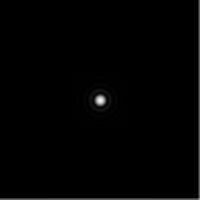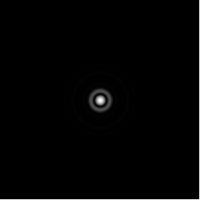Obstruction
|
A telescope is a light trap which brings together all the light into a bundle and presents you, the observer, with an image. In reflecting telescopes (Newtonians) is a primary mirror is used for this, which starts to focus the image towards the front of the telescope tube. Objects can be observed through the eyepiece on the side of the telescope tube, via a secondary mirror (a 45° plane deflecting mirror), mounted at the top of the telescope tube mounted on spider vanes, which brings the light bundle into the eye via the focuser. This secondary mirror creates a shadow in the telescope, which reduces the performance of the telescope with respect to contrast and effective aperture. Every component which is located in the beam path of a telescope creates a shadow - the obstruction. This is basically the case for all reflecting telescopes (an exception is the ‘Schiefspiegler’). Only a refractor has an obstruction of 0% because no component interferes with the light arriving at the eyepiece. The illustrations show how the image is diffracted by an obstruction, resulting in a loss of contrast. The larger the secondary mirror in a telescope, the greater the obstruction. To work out the contrast performance, or the loss of contrast, for a reflecting telescope, you can directly subtract the secondary mirror diameter from the primary mirror diameter. This gives you the effective ‘contrast aperture’ that would have been available in a telescope without the obstruction. A Newtonian reflector telescope with a 200mm diameter mirror and a 50 mm diameter secondary mirror diameter would provide the same contrast performance as a refractor with a 150mm aperture. So if you measure the secondary mirror diameter, you can calculate the effective contrast. It is somewhat different story regarding the light gathering ability. Of course it is also reduced by the obstruction too, but not to the same extent as we have seen with the contrast. Here you can see a 150mm refractor and a 200mm reflector compared: Skywatcher Teleskope AC 150/1200 EvoStar Skywatcher Teleskop N 200/1000 NEQ-5
|
Obstruction0%
Obstruction40% (Images generated with aberrator with permission from Cor Berrevoets)
|


